INSTITUT SUPERIEUR D'ANTHROPOLOGIE
INSTITUT OF ANTHROPOLOGY
COURS ONLINE – COURS A DISTANCE
INSCRIPTIONS OUVERTES
REGISTER NOW
OMAN – 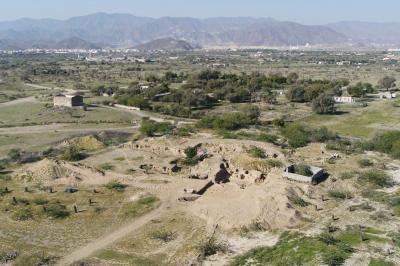
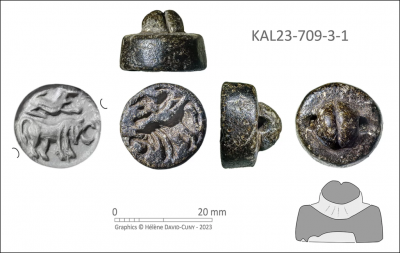 Kalba - Kalba is a multi-period site situated in the Emirate of Sharjah, United Arab Emirates, on the Gulf of Oman, and it is one of the sites under investigation as a hub for these early commercial networks in the southeastern Arabian Peninsula. Kalba was continuously inhabited from the Early Bronze Age to the Iron Age (c. 2500–600 BC), despite environmental changes that made the area more arid. In addition to providing favorable weather, Kalba’s strategic location made it an excellent entry point for caravan routes connecting land and sea. The Hajar Mountains can still be crossed via this route, which also makes it possible to trade goods with the southeast of the Arabian Peninsula. However, the researchers emphasize the importance of considering the question of what objects or raw materials were brought to Kalba, produced and used at the site, and which presumably served as trade goods. All indications point to a special relevance of mineral resources. The research findings show that a multi-crafting coastal community not only occupies a favorable ecological niche but also employs sophisticated and adaptable raw-material procurement strategies. Moreover, a “Gulf-type” seal attests to Kalba’s involvement in extensive networks of trade and exchange. According to archaeologists, this type of seal, originally produced in the Dilmun region, can be dated to the late third millennium BCE. The seal depicts a bull and possibly a lion in an attacking posture. The bull motif, widely recognized in similar seals, is influenced by the iconography of the Indus Valley seals. The lion, however, is intriguing, as it is not represented in Indus seals, but is rather known as a motif in the cylinder seals of the westernmost Mesopotamian region. The motifs on the “Gulf-type” seal from Kalba, they conclude, seem to represent a potential synthesis of Eastern and Western motif traditions within a distinct local seal type in the southeastern Arabian Peninsula, emphasizing the cohesive nature of this coastal trading hub.
Kalba - Kalba is a multi-period site situated in the Emirate of Sharjah, United Arab Emirates, on the Gulf of Oman, and it is one of the sites under investigation as a hub for these early commercial networks in the southeastern Arabian Peninsula. Kalba was continuously inhabited from the Early Bronze Age to the Iron Age (c. 2500–600 BC), despite environmental changes that made the area more arid. In addition to providing favorable weather, Kalba’s strategic location made it an excellent entry point for caravan routes connecting land and sea. The Hajar Mountains can still be crossed via this route, which also makes it possible to trade goods with the southeast of the Arabian Peninsula. However, the researchers emphasize the importance of considering the question of what objects or raw materials were brought to Kalba, produced and used at the site, and which presumably served as trade goods. All indications point to a special relevance of mineral resources. The research findings show that a multi-crafting coastal community not only occupies a favorable ecological niche but also employs sophisticated and adaptable raw-material procurement strategies. Moreover, a “Gulf-type” seal attests to Kalba’s involvement in extensive networks of trade and exchange. According to archaeologists, this type of seal, originally produced in the Dilmun region, can be dated to the late third millennium BCE. The seal depicts a bull and possibly a lion in an attacking posture. The bull motif, widely recognized in similar seals, is influenced by the iconography of the Indus Valley seals. The lion, however, is intriguing, as it is not represented in Indus seals, but is rather known as a motif in the cylinder seals of the westernmost Mesopotamian region. The motifs on the “Gulf-type” seal from Kalba, they conclude, seem to represent a potential synthesis of Eastern and Western motif traditions within a distinct local seal type in the southeastern Arabian Peninsula, emphasizing the cohesive nature of this coastal trading hub.
A 4000-Year-Old Seal Found in the prehistoric coastal site of Kalba on the Gulf of Oman - Arkeonews
INDE – 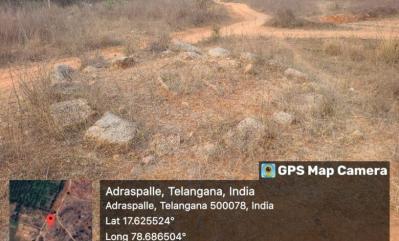 Adraspalle - Archaeology enthusiasts have found a megalithic burial site at Adraspalle village of Thiruchintalapalli mandal in Medchal-Malkajgiri district. According to S Haragopal, convener of Kotha Telangana Charithra Brundam, who discovered the site, there were 18 stones placed in a circle, and these graves are cist burials with the orthostats (stone slab chambers) at the center of the stones lying exposed. He told Siasat.com that there were also Menhirs measuring 12 to 14 feet in height found at the Megalithic site, which suggested that this was a mass burial site that could be at least 4,000 years old.
Adraspalle - Archaeology enthusiasts have found a megalithic burial site at Adraspalle village of Thiruchintalapalli mandal in Medchal-Malkajgiri district. According to S Haragopal, convener of Kotha Telangana Charithra Brundam, who discovered the site, there were 18 stones placed in a circle, and these graves are cist burials with the orthostats (stone slab chambers) at the center of the stones lying exposed. He told Siasat.com that there were also Menhirs measuring 12 to 14 feet in height found at the Megalithic site, which suggested that this was a mass burial site that could be at least 4,000 years old.
4,000-year-old Megalithic burial site found in Telangana, claim researchers (siasat.com)
GRECE – 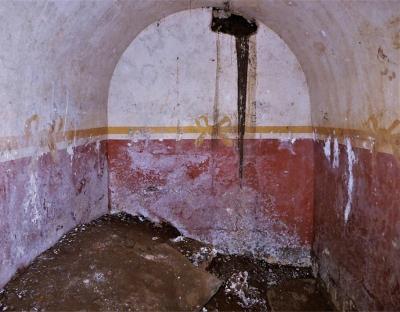 Aegae - In the ancient city of Aegae (present-day Vergina) in Imathia, Central Macedonia, during the construction of the sewerage network, tomb of a local noble, buried with his wife, was discovered. Aegae or Aigai was the original capital of the Macedonians, an ancient kingdom in Emathia in northern Greece. In antiquity, the city remained the burial place of the royal family after the capital was transferred to the city of Pella at the beginning of the 4th century BC. This and other important findings of the archaeological excavations carried out during the rescue excavations in the necropolis of Aigai last year were presented by Angeliki Kottaridis, Honorary Director of Antiquities, at the 36th Annual Archaeological Meeting of the “the Archaeological Project in Macedonia and Thrace in 2023” in Thessaloniki. The tomb, which dates back to the third century BC, was discovered in an area with mounds in the northwest corner of the necropolis. The entranceway of the tomb enclosed by piles of stones was unearthed. The interior of the tomb measures 3.7 x 2.7 meters. “This is an important tomb because the man buried here, the main deceased, had a shield reinforced with iron pieces, and the weapons preserved in sections show that they were made in a very good workshop, so it is probably one of the hetairai (Macedonian elite cavalry),” said Kottaridi. The interior of the tomb is decorated with an encircling golden band with bows. The colored mortars on the facade observed by the archaeologists belong to two phases and are explained by the later burial of his wife here, while a crown of gold myrtle attracted attention among the jewels found in the tomb. The tomb that Dimitris Pandermanlis excavated in 1969 is located just 100 meters away from this one, and it contains two additional tombs. In the archaeologist’s opinion, it is most likely a group of wealthy tombs.
Aegae - In the ancient city of Aegae (present-day Vergina) in Imathia, Central Macedonia, during the construction of the sewerage network, tomb of a local noble, buried with his wife, was discovered. Aegae or Aigai was the original capital of the Macedonians, an ancient kingdom in Emathia in northern Greece. In antiquity, the city remained the burial place of the royal family after the capital was transferred to the city of Pella at the beginning of the 4th century BC. This and other important findings of the archaeological excavations carried out during the rescue excavations in the necropolis of Aigai last year were presented by Angeliki Kottaridis, Honorary Director of Antiquities, at the 36th Annual Archaeological Meeting of the “the Archaeological Project in Macedonia and Thrace in 2023” in Thessaloniki. The tomb, which dates back to the third century BC, was discovered in an area with mounds in the northwest corner of the necropolis. The entranceway of the tomb enclosed by piles of stones was unearthed. The interior of the tomb measures 3.7 x 2.7 meters. “This is an important tomb because the man buried here, the main deceased, had a shield reinforced with iron pieces, and the weapons preserved in sections show that they were made in a very good workshop, so it is probably one of the hetairai (Macedonian elite cavalry),” said Kottaridi. The interior of the tomb is decorated with an encircling golden band with bows. The colored mortars on the facade observed by the archaeologists belong to two phases and are explained by the later burial of his wife here, while a crown of gold myrtle attracted attention among the jewels found in the tomb. The tomb that Dimitris Pandermanlis excavated in 1969 is located just 100 meters away from this one, and it contains two additional tombs. In the archaeologist’s opinion, it is most likely a group of wealthy tombs.
High-status Macedonian tomb discovered in ancient Aegae, Central Macedonia - Arkeonews
CHINE – 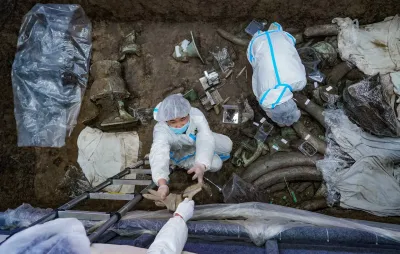 Changzhou. - Archaeologists have discovered a large stone "yue," an axe-like ceremonial artifact, in a 6,300-year-old tomb in east China's Jiangsu Province. This was reported by The Xinhua News Agency. The artifact, believed to be the largest well-preserved prehistoric stone yue ever found in China, was recently unearthed from the Sanxingcun relic site in the city of Changzhou.Yue is believed to have originated as a weapon but was later more commonly used in rituals as a ceremonial axe in the Bronze Age. Measuring about 36 cm in width, the stone weapon features a large hole in its center and exhibits no traces of use. It was placed beside the head of the male owner of, a tomb noticeably larger than others in the area. "It suggests that over 6,000 years ago, some yue were no longer used as a tool and instead became a symbol of personal status or power", – said Li Moran, a researcher with the Institute of Archaeology, Chinese Academy of Social Sciences, who led the site's excavation. The tomb owner was also interred with a stone cauldron, a stone knife and more than 20 lower jawbones of domestic pigs, while another stone yue was placed beside his waist. "The use of stone yue as a scepter and ritual object indicates that the population had started to stratify", – Li said, adding that the discovery benefits the study of China's earliest power structure and its evolution. First unearthed in 1993, the Neolithic site of Sanxingcun has seen the discovery of many bone artifacts, stone tools and jadeware in the latest round of excavation starting in April 2023.
Changzhou. - Archaeologists have discovered a large stone "yue," an axe-like ceremonial artifact, in a 6,300-year-old tomb in east China's Jiangsu Province. This was reported by The Xinhua News Agency. The artifact, believed to be the largest well-preserved prehistoric stone yue ever found in China, was recently unearthed from the Sanxingcun relic site in the city of Changzhou.Yue is believed to have originated as a weapon but was later more commonly used in rituals as a ceremonial axe in the Bronze Age. Measuring about 36 cm in width, the stone weapon features a large hole in its center and exhibits no traces of use. It was placed beside the head of the male owner of, a tomb noticeably larger than others in the area. "It suggests that over 6,000 years ago, some yue were no longer used as a tool and instead became a symbol of personal status or power", – said Li Moran, a researcher with the Institute of Archaeology, Chinese Academy of Social Sciences, who led the site's excavation. The tomb owner was also interred with a stone cauldron, a stone knife and more than 20 lower jawbones of domestic pigs, while another stone yue was placed beside his waist. "The use of stone yue as a scepter and ritual object indicates that the population had started to stratify", – Li said, adding that the discovery benefits the study of China's earliest power structure and its evolution. First unearthed in 1993, the Neolithic site of Sanxingcun has seen the discovery of many bone artifacts, stone tools and jadeware in the latest round of excavation starting in April 2023.
6,300-year-old axe-like scepter found in east China | Ukrainian news (ukranews.com)
FINLANDE –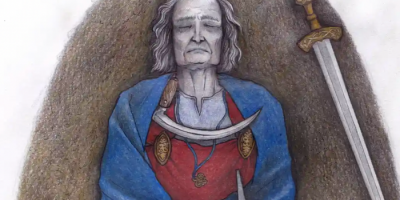 Suontaka Vesitorninmäki - The grave may suggest that non-binary people were respected members of communities centuries ago Remains found in Finland could be those of a non-binary leader who lived more than 1,000 years ago. Analysis of the grave could challenge long-held beliefs about gender roles in ancient societies and suggests that non-binary people were revered members of communities. According to a peer-reviewed study in the European Journal of Archaeology last month, DNA analysis of the remains in a late iron age grave at Suontaka Vesitorninmäki in Hattula, southern Finland, may have belonged to a high-status non-binary person. Archeologists had remained unsure about the nature of the remains until last month when new DNA testing on the body confirmed the grave contained just one body. The remains were first discovered in 1968 during building work, with the grave containing jewellery and fragments of woollen clothing suggesting the dead person was dressed in “typical feminine costume of the era.” However, the grave also contained a hiltless sword, with another sword buried above the original grave. These were features of graves more often associated with masculinity. The study’s lead author, Ulla Moilanen, said: “The buried individual seems to have been a highly respected member of their community.“They were laid in the grave on a soft feather blanket with valuable furs and objects.” The researchers said that archaeologists had assumed the grave contained two bodies – a man and a woman – or that it was evidence strong female leaders existed in early medieval Finland. But DNA analysis later showed that the grave only held one person and that they had a condition called Klinefelter syndrome. This is a condition where a male is born with an extra copy of the X chromosome, which is the chromosome that makes up a female’s DNA. The condition is thought to affect one in 660 men. Men with the syndrome are still genetically male and often will be unaware that they have an extra X chromosome. It can cause enlarged breasts, a small penis and testicles, a low sex drive, and infertility. The researchers in Finland have made clear that the DNA results were based on a small sample, and they have had to rely on some modelling to get results. They have confirmed that it is likely the body had the chromosomes XXY though and that the high-status burial is very likely to mean that the person identified outside the traditional gender classes. “The overall context of the grave indicates that it was a respected person whose gender identity may well have been non-binary,” they wrote. Researchers said the findings challenge the idea that “men with feminine social roles and men dressing in feminine clothes were disrespected and considered shameful” in early medieval Scandinavia, an environment described as “ultramasculine.” Moilanen added that the person “might not have been considered strictly a female or a male in the early middle ages community. The abundant collection of objects buried in the grave is proof that the person was not only accepted but also valued and respected.”
Suontaka Vesitorninmäki - The grave may suggest that non-binary people were respected members of communities centuries ago Remains found in Finland could be those of a non-binary leader who lived more than 1,000 years ago. Analysis of the grave could challenge long-held beliefs about gender roles in ancient societies and suggests that non-binary people were revered members of communities. According to a peer-reviewed study in the European Journal of Archaeology last month, DNA analysis of the remains in a late iron age grave at Suontaka Vesitorninmäki in Hattula, southern Finland, may have belonged to a high-status non-binary person. Archeologists had remained unsure about the nature of the remains until last month when new DNA testing on the body confirmed the grave contained just one body. The remains were first discovered in 1968 during building work, with the grave containing jewellery and fragments of woollen clothing suggesting the dead person was dressed in “typical feminine costume of the era.” However, the grave also contained a hiltless sword, with another sword buried above the original grave. These were features of graves more often associated with masculinity. The study’s lead author, Ulla Moilanen, said: “The buried individual seems to have been a highly respected member of their community.“They were laid in the grave on a soft feather blanket with valuable furs and objects.” The researchers said that archaeologists had assumed the grave contained two bodies – a man and a woman – or that it was evidence strong female leaders existed in early medieval Finland. But DNA analysis later showed that the grave only held one person and that they had a condition called Klinefelter syndrome. This is a condition where a male is born with an extra copy of the X chromosome, which is the chromosome that makes up a female’s DNA. The condition is thought to affect one in 660 men. Men with the syndrome are still genetically male and often will be unaware that they have an extra X chromosome. It can cause enlarged breasts, a small penis and testicles, a low sex drive, and infertility. The researchers in Finland have made clear that the DNA results were based on a small sample, and they have had to rely on some modelling to get results. They have confirmed that it is likely the body had the chromosomes XXY though and that the high-status burial is very likely to mean that the person identified outside the traditional gender classes. “The overall context of the grave indicates that it was a respected person whose gender identity may well have been non-binary,” they wrote. Researchers said the findings challenge the idea that “men with feminine social roles and men dressing in feminine clothes were disrespected and considered shameful” in early medieval Scandinavia, an environment described as “ultramasculine.” Moilanen added that the person “might not have been considered strictly a female or a male in the early middle ages community. The abundant collection of objects buried in the grave is proof that the person was not only accepted but also valued and respected.”
Warrior buried 1,000 years ago may have been non-binary (joe.co.uk)
GRECE – 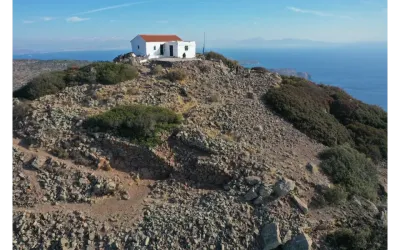 Aegina - Antiquities of Piraeus and the Islands has been exploring the top of Mount Hellanion, the highest peak on Aegina island, as well as the entire Saronic Gulf. A sanctuary dedicated to Zeus previously stood where the Analipsi Chapel stands today, overlooking the gulf. Researchers aim to record and date prehistoric remains as well as those associated with Zeus’ sanctuary. Some finds, such as a wheeled clay Mycenaean figurine, which is at the Archaeological Museum of Kolona on Aegina, point to a cultic use of the peak as early as the Bronze Age.
Aegina - Antiquities of Piraeus and the Islands has been exploring the top of Mount Hellanion, the highest peak on Aegina island, as well as the entire Saronic Gulf. A sanctuary dedicated to Zeus previously stood where the Analipsi Chapel stands today, overlooking the gulf. Researchers aim to record and date prehistoric remains as well as those associated with Zeus’ sanctuary. Some finds, such as a wheeled clay Mycenaean figurine, which is at the Archaeological Museum of Kolona on Aegina, point to a cultic use of the peak as early as the Bronze Age.
Searching for Zeus’ abode on island peak | eKathimerini.com
INDE – 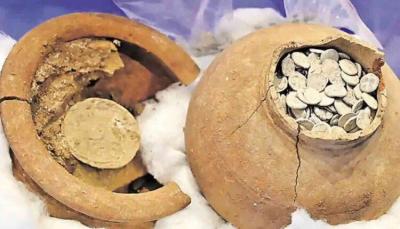 Phanigiri - A large number of ancient lead coins have been found in the excavations carried in the buddhist temple of Phanigiri, nagaram mandal of Suryapet district. A pot was unearthed during excavations in the Buddhist temple, it contains 3,730 lead coins, Near it were found samples of glass, patterns of jewelry worn by women, and a cart wheel used by children at that time. The lead coins belong to the period of the Ikshvakus.
Phanigiri - A large number of ancient lead coins have been found in the excavations carried in the buddhist temple of Phanigiri, nagaram mandal of Suryapet district. A pot was unearthed during excavations in the Buddhist temple, it contains 3,730 lead coins, Near it were found samples of glass, patterns of jewelry worn by women, and a cart wheel used by children at that time. The lead coins belong to the period of the Ikshvakus.
Excavation in Phanigiri Buddhist Temple Found 3,730 Lead Coins in Pot, Jewelry And Toys | INDToday
GRECE – 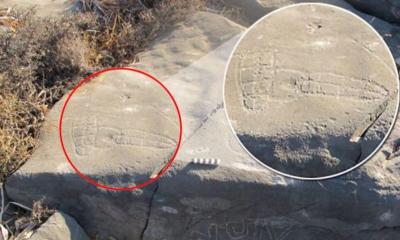 Astypalaia - In 2014, an archaeologist working on Astypalaia, a remote Greek island of the Dodecanese discovered one of the world’s oldest erotic graffiti a pair of phallus carvings dating from the 5th century BCE and a proclamation of sexual conquest from the 6th century BCE. Archaeologists believe it is the oldest record of erotic graffiti ever found, with inscriptions and etchings documenting an ongoing sexual relationship between two men in Ancient Greece. Professor Dr. Andreas Vlachopoulos discovered the two carved penises while he was giving his students a tour of the island. They were found etched into a limestone outcropping on the island’s windswept, rugged peninsula overlooking Vathay Bay. In an interview with The Guardian, Professor Andreas Vlachopoulos, a specialist in prehistoric archaeology was surprised to find such sophisticated inscriptions in such an unlikely place. He called the inscriptions “monumental in scale”. “They claimed their own space in large letters that not only expressed sexual desire but talked about the act of sex itself,” he told the Guardian. “And that is very, very rare.” Even though sexual relations between men were not taboo in ancient Greece, these racy inscriptions and phalluses carved into Astypalaia’s rocky peninsula shed light on the very private lives of ancient Greece. Carved on the side of the rock, archeologists found the name “DION” (ΔΙΩΝ). There was another inscription which was found 52 meters above sea level. “Nikasitimos was here mounting Timiona” (Νικασίτιμος οἶφε Τιμίονα), noted the inscription. The graffiti is written in the Greek alphabet, which was first developed in the 8th century BCE. It is written in a style known as “rustic,” which was popular in the sixth and fifth centuries BCE. The letters have been expertly carved into the rock, demonstrating that regular island residents were also trained in the art of writing, in addition to philosophers, academics, and historians.
Astypalaia - In 2014, an archaeologist working on Astypalaia, a remote Greek island of the Dodecanese discovered one of the world’s oldest erotic graffiti a pair of phallus carvings dating from the 5th century BCE and a proclamation of sexual conquest from the 6th century BCE. Archaeologists believe it is the oldest record of erotic graffiti ever found, with inscriptions and etchings documenting an ongoing sexual relationship between two men in Ancient Greece. Professor Dr. Andreas Vlachopoulos discovered the two carved penises while he was giving his students a tour of the island. They were found etched into a limestone outcropping on the island’s windswept, rugged peninsula overlooking Vathay Bay. In an interview with The Guardian, Professor Andreas Vlachopoulos, a specialist in prehistoric archaeology was surprised to find such sophisticated inscriptions in such an unlikely place. He called the inscriptions “monumental in scale”. “They claimed their own space in large letters that not only expressed sexual desire but talked about the act of sex itself,” he told the Guardian. “And that is very, very rare.” Even though sexual relations between men were not taboo in ancient Greece, these racy inscriptions and phalluses carved into Astypalaia’s rocky peninsula shed light on the very private lives of ancient Greece. Carved on the side of the rock, archeologists found the name “DION” (ΔΙΩΝ). There was another inscription which was found 52 meters above sea level. “Nikasitimos was here mounting Timiona” (Νικασίτιμος οἶφε Τιμίονα), noted the inscription. The graffiti is written in the Greek alphabet, which was first developed in the 8th century BCE. It is written in a style known as “rustic,” which was popular in the sixth and fifth centuries BCE. The letters have been expertly carved into the rock, demonstrating that regular island residents were also trained in the art of writing, in addition to philosophers, academics, and historians.
https://arkeonews.net/nikasitimos-was-here-mounting-timiona-2500-year-old-erotic-graffiti-on-astypalaia-greece/
FRANCE –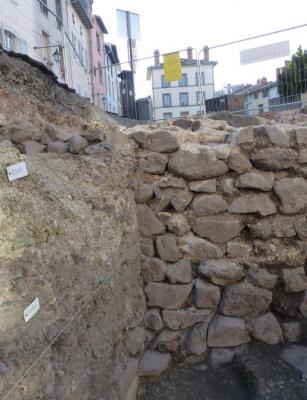 - Puy-en-Velay - Entre la rue de l’Ancienne Comédie et la rue Grenouillit, au sud de la rue Pannessac, les deux secteurs de fouille s’insèrent dans un vaste îlot urbain révélé par une source fiscale, le compoix de 1544 dit « la Margot », qui recense les biens des seigneuries du chapitre Notre-Dame du Puy et du Consulat. Un bâtiment à architecture de terre (torchis) et poteaux porteurs, une fosse et un niveau de sol et des remblais ont été dégagés. Est associé à cette période, un lot de céramiques comprenant des pichets et un fragment de trompe d’appel en céramique dans un contexte rural antérieur à la phase de construction du rempart daté de 1235-1240. Des analyses carpologiques (graines) ont révélé un environnement agraire anthropisé de champs et de prairies au XIe-XIIe s. dans un contexte périurbain. L’occupation médiévale est caractérisée par un niveau d’incendie localisé dans un espace réduit entre des caves, sous des couches de remblais, auquel sont associées de la céramique culinaire et de la céramique glaçurée (pichets) et une obole frappée par les comtes de Toulouse entre 1200 et 1220, sous Raymond VI (1156-1222). Un autre lot de graines carbonisées (céréales, légumineuses, fruits et plantes sauvages, chénopode blanc) témoigne de la présence de jardins et d’espaces ouverts. Un premier parcellaire se met en place avec la construction d’une fosse maçonnée ou d'un puits sur la rue des Ais et d’un mur en pierres sèches près de la rue Grenouillit. L’occupation du bas Moyen Âge (XIVe-XVe s) se manifeste le long de la rue des Ais par la mise en place des premières fondations de murs et de massifs de maçonnerie liées à la mise en place de l’habitat et d’un parcellaire sur la frange ouest et nord de l’emprise et par la présence d’un pilier et de niveaux de sols dans le secteur 2, entre la rue Grenouillit et la rue du Planet. L’occupation de la période moderne (XVIe-XVIIIe s.) est bien caractérisée par une densification du bâti dans les deux secteurs de fouille renseignés par les compoix, avec l’installation de plusieurs caves, dont au moins une est voûtée. Des niveaux de sols pavés ou en terre ont été retrouvés dans les caves. La fondation d’un escalier en vis a été dégagée des démolitions récentes. Une section de la rue non pavée du Planet ou du Cul de sac de Planet a été explorée dans l'autre secteur de la fouille. Une grande fosse latrinale est construite dans l’îlot au XVIIIe s.
- Puy-en-Velay - Entre la rue de l’Ancienne Comédie et la rue Grenouillit, au sud de la rue Pannessac, les deux secteurs de fouille s’insèrent dans un vaste îlot urbain révélé par une source fiscale, le compoix de 1544 dit « la Margot », qui recense les biens des seigneuries du chapitre Notre-Dame du Puy et du Consulat. Un bâtiment à architecture de terre (torchis) et poteaux porteurs, une fosse et un niveau de sol et des remblais ont été dégagés. Est associé à cette période, un lot de céramiques comprenant des pichets et un fragment de trompe d’appel en céramique dans un contexte rural antérieur à la phase de construction du rempart daté de 1235-1240. Des analyses carpologiques (graines) ont révélé un environnement agraire anthropisé de champs et de prairies au XIe-XIIe s. dans un contexte périurbain. L’occupation médiévale est caractérisée par un niveau d’incendie localisé dans un espace réduit entre des caves, sous des couches de remblais, auquel sont associées de la céramique culinaire et de la céramique glaçurée (pichets) et une obole frappée par les comtes de Toulouse entre 1200 et 1220, sous Raymond VI (1156-1222). Un autre lot de graines carbonisées (céréales, légumineuses, fruits et plantes sauvages, chénopode blanc) témoigne de la présence de jardins et d’espaces ouverts. Un premier parcellaire se met en place avec la construction d’une fosse maçonnée ou d'un puits sur la rue des Ais et d’un mur en pierres sèches près de la rue Grenouillit. L’occupation du bas Moyen Âge (XIVe-XVe s) se manifeste le long de la rue des Ais par la mise en place des premières fondations de murs et de massifs de maçonnerie liées à la mise en place de l’habitat et d’un parcellaire sur la frange ouest et nord de l’emprise et par la présence d’un pilier et de niveaux de sols dans le secteur 2, entre la rue Grenouillit et la rue du Planet. L’occupation de la période moderne (XVIe-XVIIIe s.) est bien caractérisée par une densification du bâti dans les deux secteurs de fouille renseignés par les compoix, avec l’installation de plusieurs caves, dont au moins une est voûtée. Des niveaux de sols pavés ou en terre ont été retrouvés dans les caves. La fondation d’un escalier en vis a été dégagée des démolitions récentes. Une section de la rue non pavée du Planet ou du Cul de sac de Planet a été explorée dans l'autre secteur de la fouille. Une grande fosse latrinale est construite dans l’îlot au XVIIIe s.
Actualité | Fouille de la place du Marché couvert au Puy-en-V... | Inrap